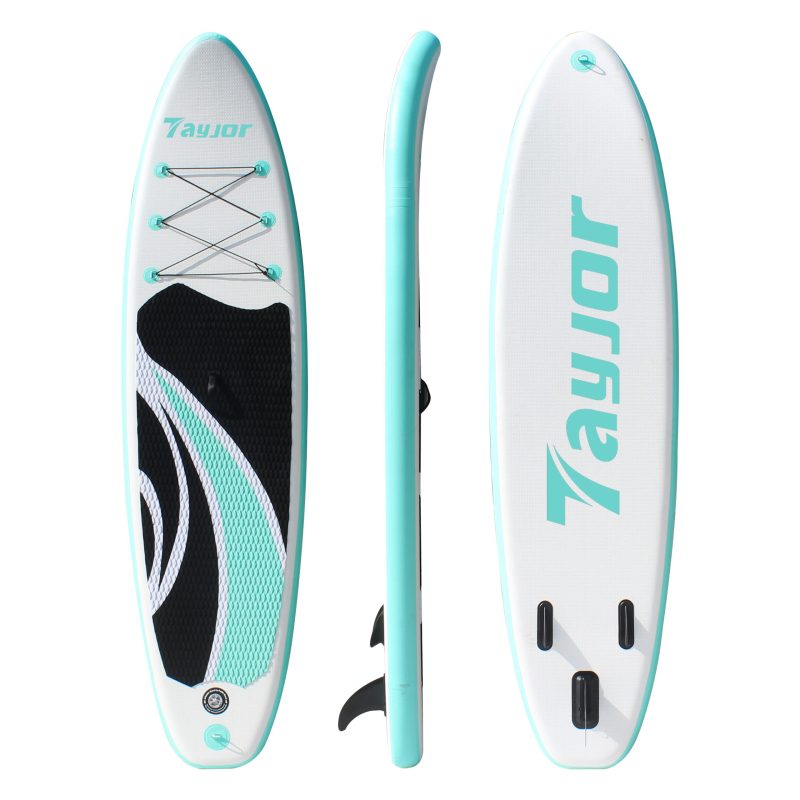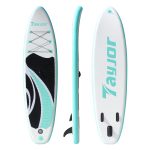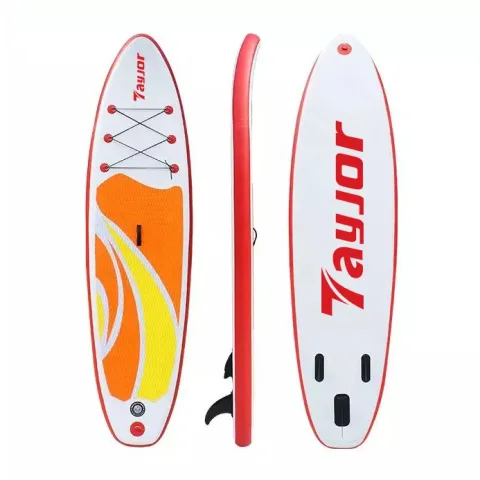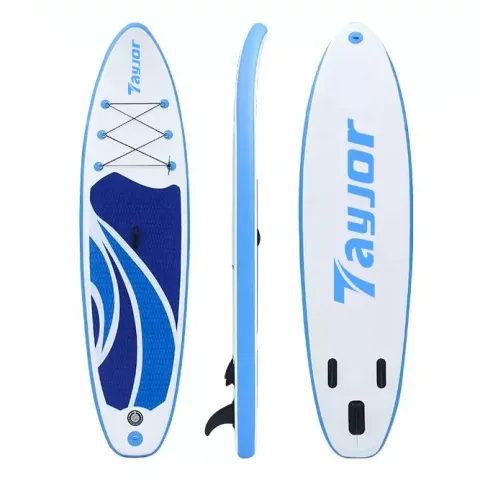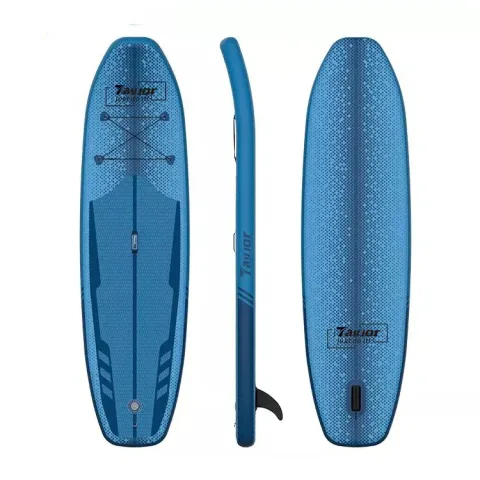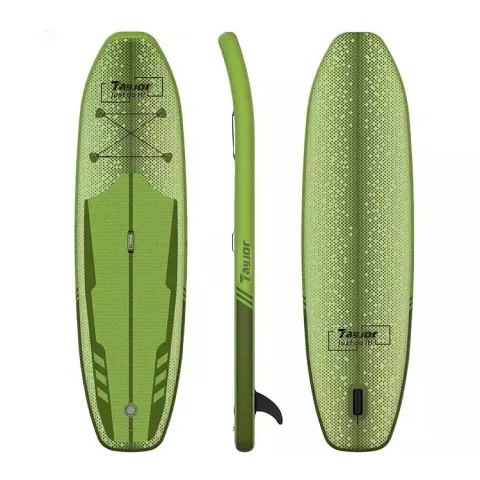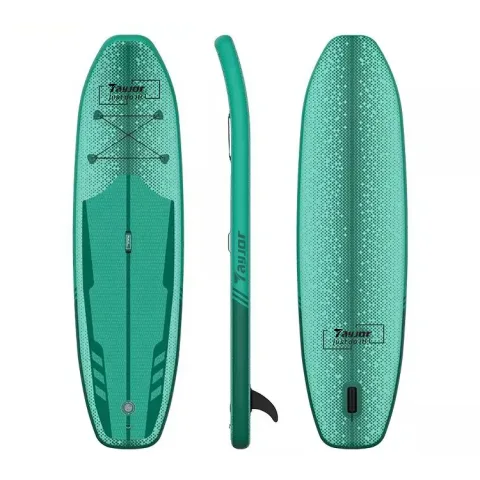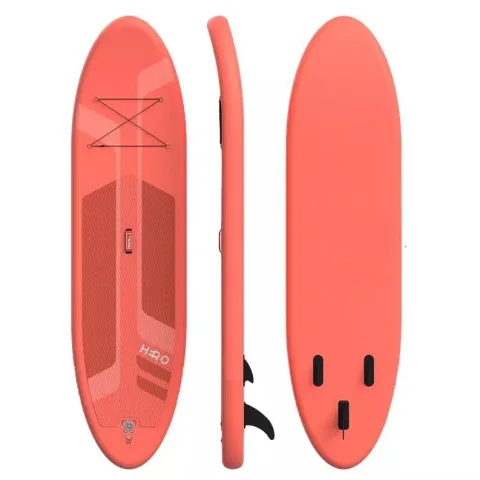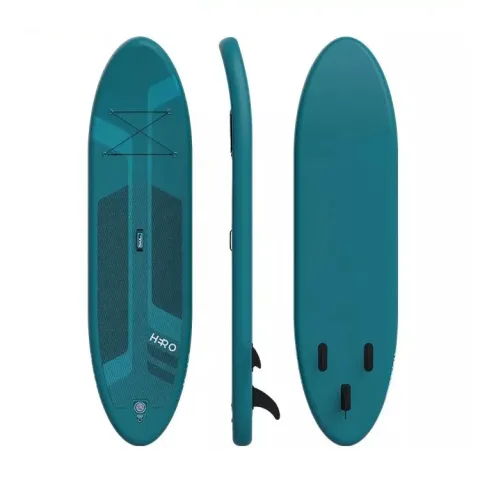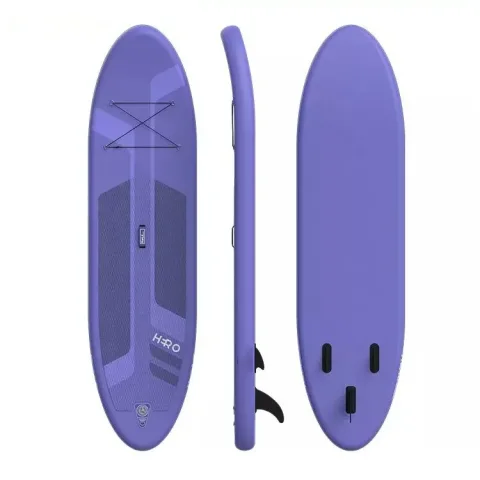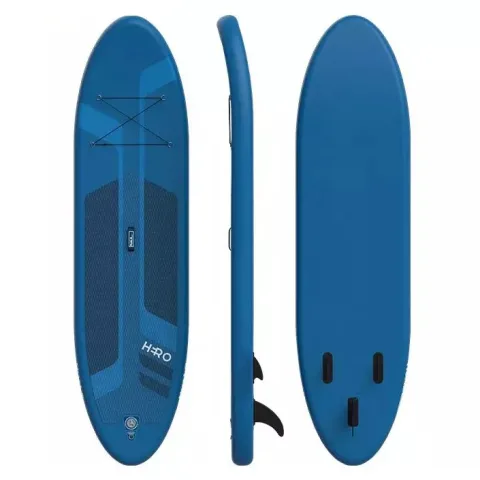water paddle board – Inflatable Paddle Board Manufacturer,SUP supplier -Stand Up Paddle Board Factory For Wholesale Price
Water sport paddle board
- FEATURES:
- • Constructed from durable, strength, stability drop stitch core material
- • Soft Non-slip EVA Form Deck pad
- • Bungee rope storage system
- • Comfort center Grip Neoprene handle
- • High Pressure quick inflation/Deflation Bravo valve , air pressure up to 15 PSI
- • Stainless steel D ring on tail for ankle leash
TECHNOLOGY:
1.Ultra-light Drop-stitch core for higher compressive and tensile strength
2.lnner Rail Layer for extra air tight seal
3.0uter Rail Layer for smooth and compact bonding of all layers
4.Compostite coating with heavy duty PVC layer

- PACKAGE INCLUDED:
- • 1 x Paddle Boad
- • 1x Durable Backpack
- • 1 x Dual Action Hand Pump with pressure gauge
- • 1×10’ Ankle leash
- • 1 x Compact 3-pieces aluminum paddle
- • 1 x Repair kit

Carton Dimension:
35×15.7×7.8in (89x40x20 cm)
Container Loading:
20/40/40H/45H: 398/835/988/1113
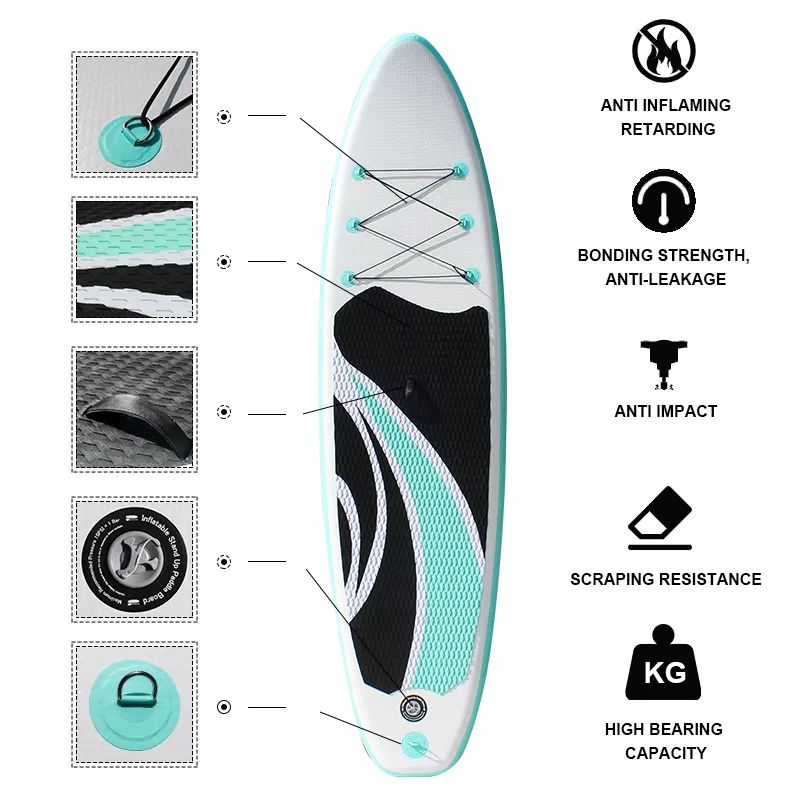
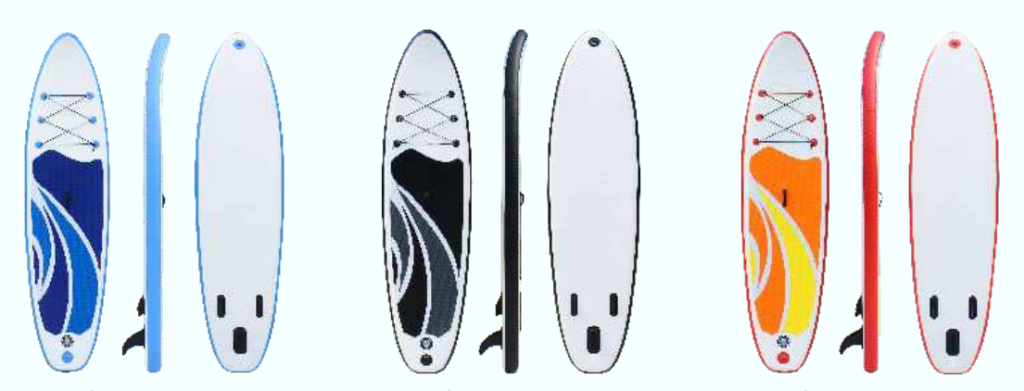
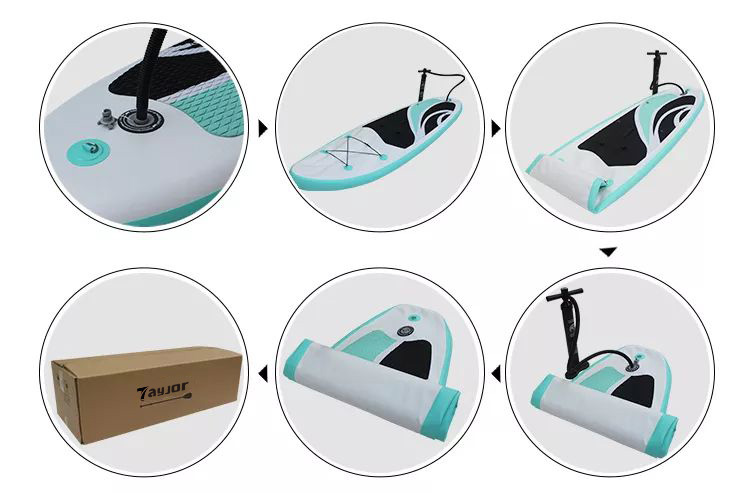
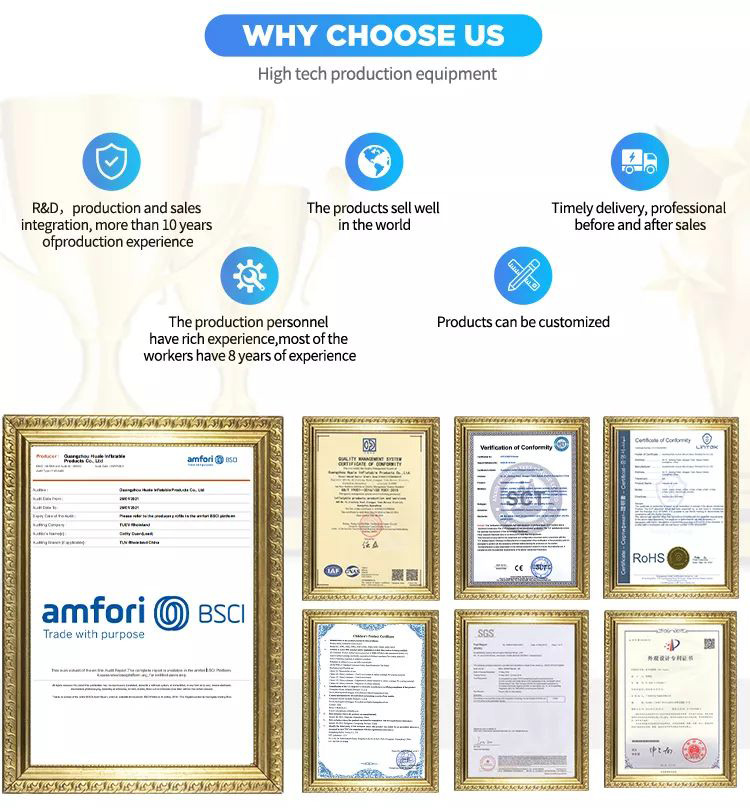
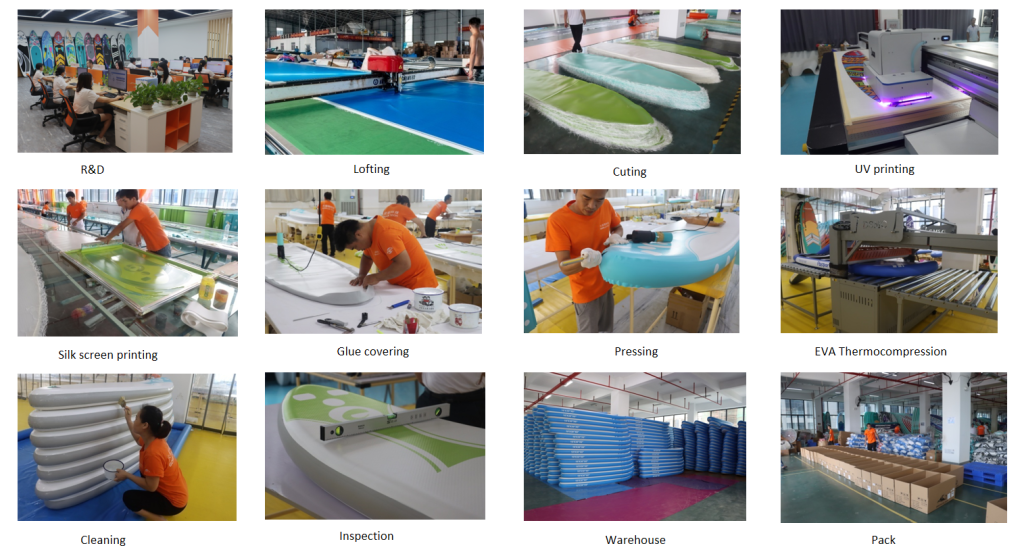
If you are interested in our products and want to know more details,please leave a message here,we will get in touch with you shortly!
Introduction to Water Paddle Boards
Water paddle boards are becoming very popular. Many people use them for fun and exercise on the water. They are great for lakes, rivers, and oceans. This blog will introduce water paddle boards, their types, benefits, and how to choose the right one. We will also give tips on using and maintaining your water paddle board.
What is a Water Paddle Board?
A water paddle board is a large, flat board that you stand on and paddle through the water. You use a long paddle to move and steer. This activity is called stand-up paddleboarding (SUP). It is easy to learn and can be enjoyed by people of all ages.
Types of Water Paddle Boards
There are different types of water paddle boards. Each type has its own features and uses. Here are the main types:
All-Around Paddle Boards
These boards are versatile and suitable for beginners. They are stable and can be used in various water conditions. All-around paddle boards are great for recreational paddling and small waves.
Touring Paddle Boards
Touring boards are longer and narrower. They are designed for long-distance paddling. They glide smoothly and are faster than all-around boards. Touring paddle boards are ideal for exploring lakes, rivers, and coastal areas.
Surf Paddle Boards
Surf paddle boards are shorter and have a curved shape. They are made for riding waves. These boards are less stable than all-around boards but more maneuverable. Surf paddle boards are best for people who want to surf.
Racing Paddle Boards
Racing boards are long, narrow, and lightweight. They are designed for speed and performance. These boards are used in paddleboard races and competitions. Racing paddle boards are for experienced paddlers.
Inflatable Paddle Boards
Inflatable boards can be inflated and deflated. They are easy to transport and store. These boards are very durable and can be used in various water conditions. Inflatable paddle boards are great for travelers and people with limited storage space.
Benefits of Water Paddle Boarding
Water paddle boarding has many benefits. It is a fun and healthy activity. Here are some of the key benefits:
Full-Body Workout
Paddle boarding works your entire body. Paddling strengthens your arms, shoulders, and back. Balancing on the board engages your core muscles. Standing on the board also works your legs. It is a great way to stay fit.
Improves Balance
Paddle boarding helps improve your balance. You need to stay steady on the board while paddling. This improves your coordination and stability. Better balance can help you in other sports and daily activities.
Reduces Stress
Being on the water is relaxing. Paddle boarding lets you enjoy nature and clear your mind. The rhythmic paddling motion is calming. Paddle boarding can reduce stress and improve your mood.
Cardio Exercise
Paddle boarding is a good cardio workout. It increases your heart rate and burns calories. Regular paddle boarding can improve your cardiovascular health.
Accessible to All
Paddle boarding is easy to learn. People of all ages and fitness levels can do it. You can paddle at your own pace and enjoy the experience. It is a great activity for families and groups of friends.
Choosing the Right Water Paddle Board
When choosing a water paddle board, consider the following factors:
Board Size
The size of the board affects its stability and performance. Longer and wider boards are more stable and suitable for beginners. Shorter and narrower boards are faster and more maneuverable. Choose a size that matches your skill level and intended use.
Board Volume
The volume of the board determines how much weight it can support. Higher volume boards are more buoyant and stable. They are better for heavier paddlers. Check the weight capacity of the board before buying.
Board Shape
The shape of the board affects its performance. Rounder boards are more stable and easier to turn. Pointed boards are faster and better for long-distance paddling. Choose a shape that suits your paddling style.
Material
Water paddle boards are made from different materials. Solid boards are usually made from fiberglass, epoxy, or carbon fiber. They are durable and perform well. Inflatable boards are made from high-quality PVC. They are portable and durable. Consider your storage space and transportation needs when choosing the material.
Accessories
Check if the board comes with necessary accessories. A paddle, leash, and fin are essential. Some boards come with a pump for inflating, a repair kit, and a carry bag. These accessories add value and convenience.
Tips for Using Your Water Paddle Board
Start on Calm Water
Begin on calm water to get comfortable on the board. Lakes and calm rivers are ideal starting points. Avoid strong currents and waves until you gain confidence.
Stand in the Center
Stand in the center of the board for better balance. Your feet should be parallel and shoulder-width apart. Keep your knees slightly bent.
Use Your Core
Use your core muscles to paddle. Engage your abs and twist your torso. This gives you more power and reduces strain on your arms.
Look Ahead
Look ahead while paddling. This helps you maintain balance and steer the board. Avoid looking down at your feet.
Practice Falling Safely
Practice falling off the board safely. Fall away from the board to avoid injury. Learn how to get back on the board from the water.
Maintaining Your Water Paddle Board
Rinse After Use
Rinse your board with fresh water after each use. This removes salt, sand, and dirt. It prevents damage and keeps the board clean.
Store Properly
Store your board in a cool, dry place away from direct sunlight. Avoid leaving it in hot cars or exposed to extreme temperatures. Inflatable boards should be deflated and stored in a bag.
Check for Damage
Inspect your board regularly for cracks, dents, or punctures. Repair any damage promptly. Use repair kits for minor issues or take the board to a professional for major repairs.
Clean the Paddle
Clean your paddle with fresh water and mild soap. Dry it thoroughly before storing. This prevents rust and prolongs its life.
Conclusion
Water paddle boards are a fantastic way to enjoy the water. They offer fun, exercise, and relaxation. With different types of boards available, there is something for everyone. Remember to choose the right board for your needs and skill level. Use it safely and maintain it well. Happy paddle boarding!


